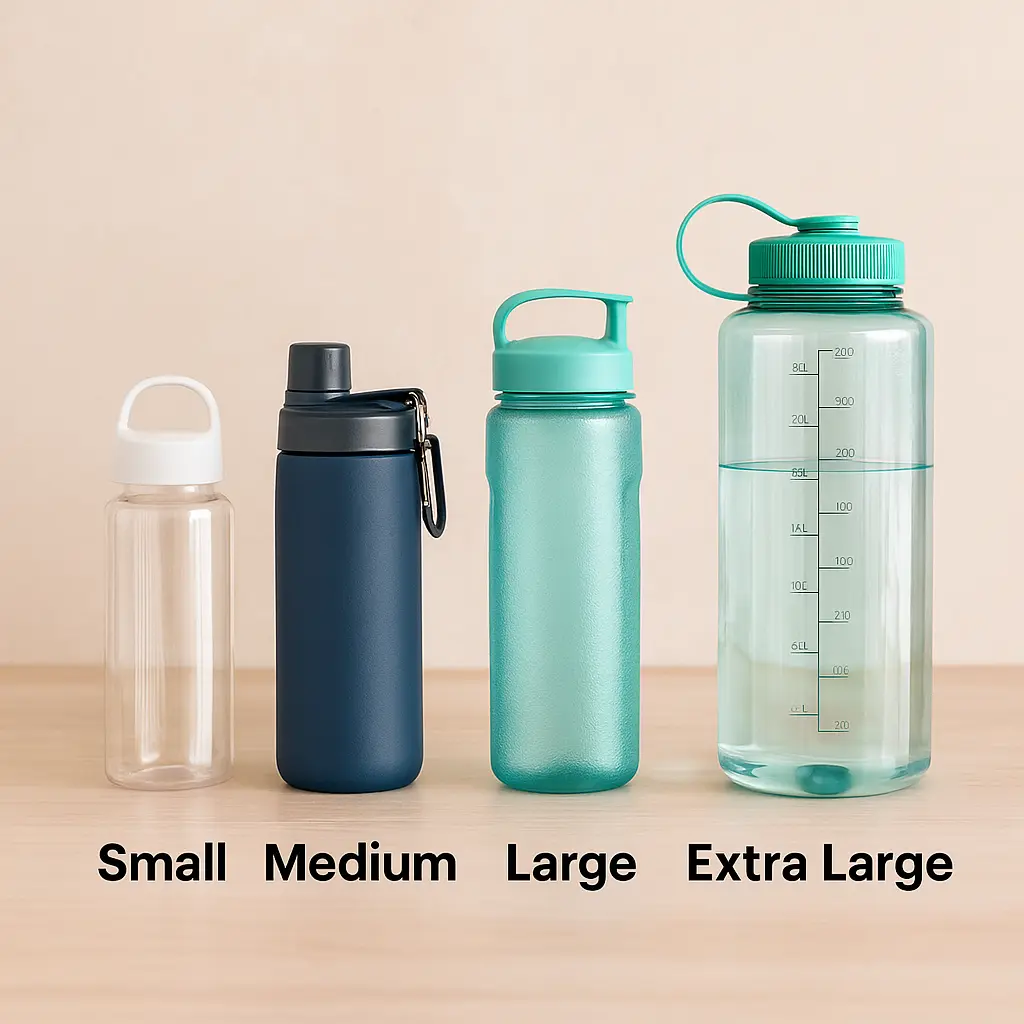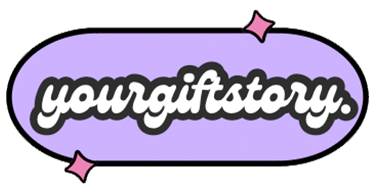La maggior parte degli adulti ha bisogno di circa 2700-3700 ml al giorno.
- Distretto di Yiwu, Zhejiang, CINA
- [email protected]
- +86 15156387073
L'acqua in bottiglia ha in genere una capacità compresa tra 250 ml e 2.000 ml, e ogni formato soddisfa esigenze diverse: dall'idratazione rapida in movimento alle attività all'aperto che durano tutto il giorno. Conoscere la capacità esatta aiuta a pianificare l'assunzione di liquidi in modo più accurato, ad adattare la dimensione della bottiglia al proprio stile di vita e a mantenere una corretta idratazione senza bere troppo o troppo poco.
Sommario
Capire il significato di "ml" nelle bottiglie d'acqua
Quando si parla di quanti ml contiene una bottiglia d'acqua, è importante capire cosa significa "ml". Il millilitro (ml) è un'unità di misura per misurare il volume di un liquido e 1 ml equivale a 1/1.000 di litro.
Conversioni comuni:
1.000 ml = 1 litro (L)
500 ml ≈ 16,9 once fluide (fl oz)
Perché è importante:
Ti aiuta a monitorare con precisione l'assunzione giornaliera di acqua.
Rende più semplice la scelta della capacità più adatta al tuo stile di vita.
Particolarmente importante per gli atleti, gli escursionisti e chiunque abbia bisogno di calcolare con precisione i livelli di idratazione.
Conoscendo il valore "ml", puoi determinare rapidamente quanti ml contiene una bottiglia d'acqua e adattarli al tuo fabbisogno giornaliero.
Dimensioni comuni delle bottiglie e loro capacità in ml
Quando si guarda quanti ml contiene una bottiglia d'acqua, ecco le dimensioni più comuni che si trovano e come vengono solitamente utilizzate:
| Dimensione della bottiglia | Capacità ml | Caso d'uso comune |
|---|---|---|
| Piccolo | 250–330 ml | Per bambini, viaggi brevi o come riserva in borsa |
| Medio | 500 ml | Perfetto per l'uso in ufficio o per il trasporto quotidiano |
| Grande | 750–1000 ml | Ideale per allenamenti o per trascorrere lunghi periodi all'aperto |
| Extra Large | 1500–2000 ml | Ideale per escursioni, campeggio o viaggi a lunga distanza |
Conoscere queste categorie rende più facile scegliere la dimensione giusta quando si decide quanti ml di acqua in una bottiglia si adattano alle proprie esigenze.
Come scegliere la giusta dimensione della bottiglia

La scelta della dimensione giusta della bottiglia d'acqua inizia con la comprensione di quanti ml contiene una bottiglia d'acqua e abbinandolo ai tuoi obiettivi di idratazione quotidianiLa maggior parte degli adulti ha bisogno di circa 2,7-3,7 litri di acqua al giorno, il che si traduce in:
Sei bottiglie da 500 ml per un apporto giornaliero equilibrato.
Quattro bottiglie da 750 ml per ridurre le ricariche e garantire un'idratazione costante.
Due bottiglie da 1,5 L per trasportare acqua per un'intera giornata all'aperto.
Il tuo livello di attività e l'ambiente influiranno sulla tua scelta:
Uso in ufficio o nello studio: una bottiglia da 500 ml è leggera, si adatta facilmente a una borsa o a un portabicchieri e incoraggia a riempirla regolarmente per mantenere l'acqua fresca.
Sessioni sportive o in palestra: le bottiglie da 750 ml a 1 L sono ideali, perché riducono le interruzioni durante gli allenamenti.
Escursionismo o campeggio: le bottiglie da 1,5 L a 2 L riducono al minimo le soste per il rifornimento e garantiscono una scorta adeguata quando le fonti d'acqua sono limitate.
Tieni presente che le bottiglie più grandi contengono più acqua, ma aumentano anche il peso: 1,5 l d'acqua pesano circa 1,5 kg. Se la portabilità è importante, considera l'utilizzo di due bottiglie medie invece di una singola extra-large, per maggiore comfort e praticità.
Come controllare la capacità in ml della tua bottiglia
Controllare il fondo o l'etichetta: la maggior parte dei produttori stampa la capacità sul fondo o sul lato della bottiglia.
Utilizzare un misurino: riempire la bottiglia con acqua utilizzando un misurino graduato in millilitri per determinare la capacità.
Pesare la bottiglia – Riempire completamente la bottiglia e pesarla; poiché 1 ml di acqua ≈ 1 grammo, il peso è uguale alla capacità in ml.
Tabella di conversione da ml ad altre unità: quanti ml ci sono in una bottiglia d'acqua
Capire quanti ml contiene una bottiglia d'acqua può essere più facile se si conoscono le conversioni di base tra millilitri, litri e once liquide statunitensi. Usa questa tabella per confrontare rapidamente le capacità:
| ml | Litri | fl oz USA |
|---|---|---|
| 250 ml | 0,25 litri | 8,45 once |
| 500 ml | 0,5 litri | 16,9 once |
| 1000 ml | 1 litro | 33,8 once |
| 2000 ml | 2 litri | 67,6 once |
Questo ti aiuta a monitorare l'idratazione giornaliera e a scegliere la dimensione giusta della bottiglia in base al tuo sistema di misurazione preferito.
Perché conoscere il ml ti aiuta a rimanere idratato
Monitoraggio accurato dell'idratazione: sapere quanti ml di acqua ci sono in una bottiglia consente di misurare con precisione l'assunzione, aiutando a prevenire sia la disidratazione che l'iperidratazione.
Assunzione di acqua basata sulla scienza: il tuo fabbisogno giornaliero di ml cambia in base al livello di attività, al clima e alla dieta; conoscere la capacità della bottiglia ti consente di adattarti facilmente.
Ecologico ed economico: scegliere la giusta dimensione della bottiglia riutilizzabile riduce gli sprechi monouso e consente di risparmiare denaro sui rifornimenti frequenti o sugli acquisti di acqua in bottiglia.
Considerazioni finali sull'origine della bottiglia Owala
Molti si chiedono dove vengano prodotte le bottiglie d'acqua Owala, ma la risposta è solo una parte della storia. La qualità del prodotto dipende molto più dagli standard di produzione, dalla sicurezza dei materiali e dalla gestione della catena di approvvigionamento che dal paese di origine.
Per gli acquirenti all'ingrosso, la scelta più sicura è quella di lavorare con fornitori che hanno una comprovata esperienza nell'esportazione, possiedono certificazioni internazionali e possono fornire dettagli di produzione chiari, garantendo che i tuoi ordini soddisfino sia i requisiti normativi sia le aspettative dei clienti.
FAQ – Domande correlate su quanti ml ci sono in una bottiglia d’acqua
1. 500 ml sono sufficienti per un allenamento?
Sufficiente per allenamenti brevi, ma sessioni più lunghe richiedono più acqua.
2. Quanti ml ci sono in una bottiglia riutilizzabile standard?
Le dimensioni più comuni sono 500 ml, 750 ml e 1000 ml.
3. I ml possono variare per la stessa dimensione indicata sull'etichetta?
Sì, a causa delle differenze nella forma della bottiglia, nello spessore delle pareti e nei materiali.
4. Quanti ml dovrei bere al giorno?
Siamo uno sportello unico regalo personalizzato azienda che offre servizi di progettazione, personalizzazione personalizzata, packaging elegante e consegna per aiutarti a migliorare la presenza del marchio e a rafforzare le relazioni con i clienti.
©2025. yourgiftstory Tutti i diritti riservati.

